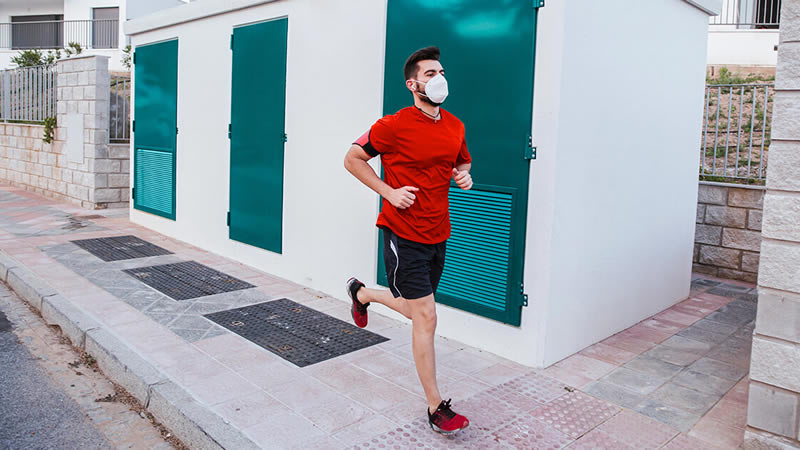
How ‘Deconditioning’ In Lockdown Affected Your Body

The pandemic saw us sink deeper into our sofas and stay at home more than ever before. As gyms closed, our daily exercise levels dropped – and so, too, did our levels of incidental movement: the walk from the car to work, the desk to the meeting room, the toilet to the communal kettle.
One survey of 8,000 Brits by Nuffield Health found 73% of people failed to meet NHS recommendations on exercise since March last year – that’s at least 150 minutes of moderate-intensity activity or 75 minutes of vigorous-intensity activity a week. Meanwhile, one-quarter of over-55s have done no exercise at all since the start of the first lockdown.
And it’s because of this that for some of us, our bodies became “deconditioned” in lockdown, say physiotherapists. This is where our bodies experience a decline in physical function as a result of not moving about. Our muscles lose strength and bulk – with consequences for our hearts, too.
[adrotate banner=”3″]How deconditioning affects the body
You might not have heard the term before now, as it’s usually associated with older adults hospitalised for long periods of time. But in the past year, people of all ages have become deconditioned due to sedentary living.
The issue can impact people’s physical function, making it harder for them to complete usual daily activities. “Your muscles will be weaker, as you lose strength,” says Hannah Morley, professional advisor to the Chartered Society of Physiotherapy (CSP). “The other thing that happens is you lose your fitness – which is to do with your cardiac and cardiorespiratory system.”
Other signs you’re deconditioned, according to the Shirley Ryan AbilityLab, a rehabilitation centre in Chicago, include: increased difficulty breathing with activity and at rest, faster heart rates at rest and with activity, loss of flexibility and impaired balance and coordination.
In the elderly especially, deconditioning has been linked to falls, functional decline, increased frailty and immobility. While the past year hopefully won’t have seen our bodies decline at the same pace you’d expect an elderly person’s to after long periods of bedrest, there may still be an impact.
Where levels of physical activity reduced from 10,500 to 1,300 steps a day in two weeks, a study revealed insulin resistance, a forerunner to type 2 diabetes, in the muscles of young male volunteers, as well as the loss of leg lean muscle mass. Responding to the report, Professor Paul Greenhaff, from the Nottingham Biomedical Research Centre, said: “It’s of genuine concern that physical inactivity and sedentary behaviours are likely to be common during the Covid-19 pandemic.”
Dr Scott Murray, a consultant cardiologist at Wirral University Teaching Hospital and medical director at Venturi Cardiology, has seen the effects of deconditioning in patients since the pandemic began, as has Morley from CSP.
Morley, who has been working in a GP surgery, says the issue is most common in those aged 50+, but can “definitely” happen in younger adults. “I’ve had people who are now short of breath going up the stairs or going to the local shop,” she says. “We lose fitness really quickly. It makes you anxious and worried because you’re in pain, and so with pain [you think] there must be something wrong, but it’s not necessarily the case. It’s just because you’ve gone back to doing something you haven’t done in six months.”
